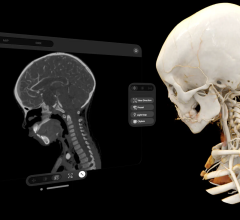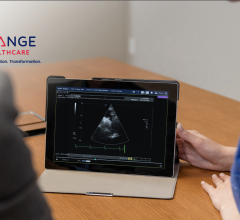
Mary Beth Massat is a healthcare freelance writer based in Crystal Lake, IL.
With the growing trend in healthcare toward higher operational costs, reduced reimbursement and heightened competition among imaging service providers, healthcare facilities must carefully plan capital equipment acquisitions and budgets.
Many of today’s high-end modalities such as CT, MRI and PET/CT are multimillion dollar purchases that require strategic planning for implementation as well as detailed marketing initiatives that can help maximize utilization. Increasing the efficiency of radiology – from the technical to the professional component – is a key factor in maximizing utilization of nearly all diagnostic imaging modalities. Accomplishing more with less, particularly with a shortage of radiologists and in some areas technologists, is an operational reality.
Yet, how can radiology administrators for both imaging centers and hospitals plan and budget their capital equipment expenditures when faced with reduced reimbursement in light of the Deficit Reduction Act of 2005? Can information technology (IT) truly create an efficient and cost-effective health system?
The Rise in Healthcare Costs
When President Bush signed into law the Deficit Reduction Act of 2005 (DRA) earlier this year, he stated that “the biggest challenge to our budget is mandatory spending – or entitlement programs like Medicare and Medicaid and Social Security.” President Bush cited growth figures for these three programs at “three times the rate of inflation” and projected that these programs would encompass 60 percent of the entire federal budget by 2030, if entitlement spending were not brought under control.
The brunt of Medicare reductions will be felt by radiology and radiation oncology as payment for imaging services between 2006 and 2015 will drop an estimated 8.1 percent – by far the largest Medicare spending reduction in the Act.1
Imaging services provided in physician offices or outpatient imaging centers affected by these reductions include: MRI, CT, X-ray, ultrasound/echocardiography, nuclear medicine/PET and fluoroscopy. Diagnostic and screening mammography is not included.
Before making any knee-jerk reaction, however, Denise Merlino, MBA, CNMT, FSNMTS, CPC and a nuclear medicine coding expert, cautions against changing capital equipment budgets and planning based solely upon DRA. “We really won’t know until November the full CMS [Centers for Medicare and Medicaid Services] rules,” said Merlino. “They have only released estimates, but have yet to fully explain how they plan to implement these changes.” Merlino pointed out that several issues must still be resolved, namely wage adjustments and patient co-pay charges. Merlino added, “The changes [in DRA] sound simplistic, but they are not. Current estimates could be off by $20 per procedure, so we really need more information from CMS to make accurate statements about the impact of DRA.”
Identifying the Cause for Higher Costs
In addition to the proliferation of imaging services, analysis by Blue Cross Blue Shield (BCBS), the National Coalition on HealthCare and PriceWaterhouseCoopers suggest other factors are to blame for the increase in Medicare/Medicaid spending. BCBS’ “Medical Technology as a Driver of Healthcare Costs: Medical Imaging,” cites a study by PricewaterhouseCoopers that estimated “medical advances would account for an estimated 22 percent of the increase in healthcare spending between 2001 and 2010.”2 However, because newer technologies are often safer and less invasive, this causes the volume of procedures to drop, thus reducing overall costs. As an example, the report points out that “[t]he increased use of angioplasty initially increased total costs, even though it was less expensive than the existing alternative, open-heart surgery.” This short-term increase is expected to taper off as angioplasty replaces bypass surgery, yielding to long-term benefits for patients and less total cost to healthcare.
This study concludes that the rate of growth in medical imaging is not likely to slow, and therefore wise utilization is critical to maximizing the benefits of medical imaging. In fact, Barbara M. Rothenberg, Ph.D., BCBS Association, also noted that “areas with greater availability of diagnostic imaging and cardiac facilities appear to have lower prices for commercially insured patients (where prices are negotiated), but higher prices for Medicare patients (where prices are set by government regulation).”
Across-the-board cuts to diagnostic imaging is not the solution to reducing healthcare’s high price tag and, in fact, may be counter-productive in the endeavor to lower the nation’s medical bills. According to a study conducted at Massachusetts General Hospital (MGH) on 17,139 patients between 1996 and 2002, diagnostic imaging procedures more than doubled and imaging costs during that time increased 51 percent, yet other hospital costs simultaneously increased 55 percent. The study also found that every $385 spent on imaging was associated with one less day in the hospital. The study deduced that while imaging costs are rising at approximately the same rate as other hospital costs, it provides benefits such as shorter hospital stays, which actually reduce costs.4
Benefits of Health IT
Medical imaging is not the only productivity driver. Digital imaging and information technology (IT) also allow providers to better manage vast volumes of data at a lower cost. A survey of hospital management by the PricewaterhouseCoopers Health Research Institute in conjunction with the Healthcare Financial Management Association (HFMA) found that the three most frequently cited capital projects slated for the next five years are all IT acquisitions: 71.7 percent for digital radiology systems, 64.1 percent for computerized physician order entry systems and 61.3 percent for major IT systems.5 The logic behind such IT-intensive investments include efficiency gains, such as enhanced transaction speed, reduced labor costs associated with the administrative tasks — which can make up 25 percent of the overall cost, improved patient safety, privacy and access to information. According to the report, the perception is that hospitals and physicians that implement IT will be seen as having a competitive advantage.
“Better use of technology and interoperable electronic networks accelerate integration, standardization and knowledge transfer of administrative and clinical information,” concluded another PricewaterhouseCoopers study, HealthCast 2020: Creating a Sustainable Future, which examined responses to the globalization of healthcare and efforts in many countries to create a sustainable health system.6
IT as the Solution
Thinning profit margins have put healthcare facilities to the test, and many are betting on IT to produce efficiency gains and compensate for dwindling reimbursements. According to Stuart Gardner, president & founder, SG&A Consulting, an Arlington, TX-based PACS/Diagnostic Imaging consulting firm, “our studies have shown that deployed PACS provides an ROI [return-on-investment] of 10 percent, while increasing [overall] efficiency 13 to 15 percent.” While Gardner acknowledges this will not completely offset the payment caps and reduction in imaging reimbursement from DRA 2005, it is a step in the right direction.
Data mining the electronic patient data generated by IT systems such as PACS and RIS, along with analysis/trending by CPT codes, may help justify healthcare’s increasing reliance on medical imaging. “More customers are asking how to optimize RIS-based information to better manage their business,” said Merge Healthcare’s new president, Robert J. White. “Extending the RIS with a practice analysis engine can make key business data seamlessly available for decision support – to help cut costs, for example, or by identifying and managing inefficiencies.”
In the wake of the DRA and the Medicare reimbursement cuts, healthcare facilities are looking to track revenues to improve their business. “There is a trend toward using IT solutions and sophisticated practice management tools, whether it is a Web solution, or, like our practice analysis, real-time data mining or dashboards, to help them manage their practice as a business,” said Tim Kulbago, vice president of Product Innovation, Merge.
“Our practice analysis module is based on Microsoft OLAP technology, which provides an interactive tool for data mining. If you were a practice manager and wanted to know what last quarter’s revenues were, based on all MR scans for Medicare in Illinois, you could ask those questions and as you click on data fields, drill up and down and get displays all in real time to answer those questions. You could see [for example] that the revenue last quarter for all Illinois MR Medicare exams was $6 million – a drop from $8 million. It shows all MR exams and average reimbursements from last quarter to the current quarter. You can ask how many exams you performed. You can see if, for example, MR brain with contrast went down. Why? Who is referring those exams? You can see what referring physician is not referring as many patients. In this module, you can ask any follow-up questions and generate immediate answers.”
To mitigate the heavy initial investment involved with implementing an information management system, as well as hardware maintenance and software upgrade costs, a Web-based platform may be a more feasible option. GE Healthcare recently introduced its Access Management Suite and Patient Financials Suite for hospitals and Integrated Delivery Network on an ASP model.
“As the adoption of information technologies in the healthcare industry continues to grow, so does the need for the vendors to provide Application Service Provider (ASP) solutions as a way for organizations to cost effectively utilize these solutions to provide high-quality patient care,” said Jeff Kao, vice president and general manager for GE Healthcare. “Remotely hosting these solutions shifts the burden of technical support away from the organization, allowing them to focus on their core competency – healthcare.”
Integration of IT management tools with diagnostic imaging may be the key to balancing the escalating costs for hospitals and imaging centers with decreased reimbursements.
References:
1. Congressional Budget Office Cost Estimate, Changes in Direct Spending. Available at: http: //www.cbo.gov
2. Medical Technology as a Driver of Healthcare Costs: Medical Imaging. Available at: http: //www.bcbs.com/coststudies
3. Facts on Health Care Costs: National Coalition on Health Care. Available at: http: //www.nchc.org/facts
4. Beinfeld, Molly T., MPH, Gazelle, G. Scott, MD, MPH, PhD; “Diagnostic Imaging Costs: Are They Driving Up the Costs of Hospital Care?”: Radiology 2005;235:934-939.
5. President Bush’s Second Term: Prescribing private solutions for the nation’s healthcare problems. PricewaterhouseCoopers Health Research Institute. Available at: www.healthcare.pwc.com


 May 01, 2024
May 01, 2024 









